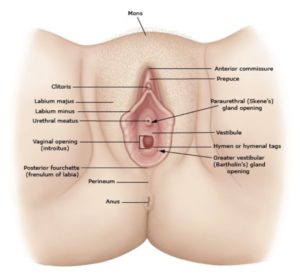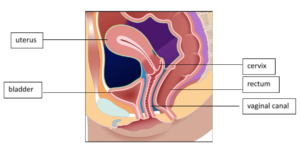Let’s get some (anatomy) facts straight
Remember when your best friend told you that you could get pregnant from oral sex or that virginity only applied to girls? We all know that there is a tremendous amount of misinformation about sex and our bodies and that, even today, many of these misunderstandings still remain. So too, remain the consequence of this knowledge gap, including coerced or pressured intimacy in adolescence and young adulthood, unintended pregnancy, and spread of STDs. While much of this information gap is eventually ‘corrected’, there is nonetheless a vast population of adult men & women who, while acquainted with the basics, still know very little about the body parts that roughly fifty percent of the population of us have. And a recent survey highlights just how confused many folks are about these facts.
Let’s get a few things out there that we can agree upon (while these rules aren’t for everyone who is female, it’s the most common setup):
Vulva
- The vulva is a word which encompasses the entire typical outer female genitalia. It includes, the vagina, the labia, the clitoris and the urethral opening.
- The labia majora and labia minora, referred to as the vaginal ‘lips’, are the outer and inner skin folds surrounding the vaginal opening.
- The clitoris is located at the top of the vulva.
- Below the clitoris is the urethral opening. This is the how urine gets out of the bladder when we pee.
- The vagina is an elastic canal which connects the uterus to the outside world.
- While the basics are typically the same, there is tremendous variation between vulvas. No two (or their parts) look exactly alike.
Other Stuff “Down There”
- The skin between the vulva and the anus is called the perineum.
- The anus is the opening that connects the rectum to the outside world.
- The mons pubis is the area above the vulva and, after puberty, is also covered by pubic hair.

The Hymen: A lot of fuss about nothing
- The hymen is a piece of tissue which may be left over from embryologic development and cover or partially cover the opening of the vagina between the labia.
- The amount of tissue associated with the hymen varies widely from person to person.
- The hymen is NOT a physical marker of virginity and does not always tear or bleed the first time there is vaginal penetration.
Deeper Structures
- The pelvic organs include the upper third of the vagina, the uterus, the cervix, the fallopian tubes and ovaries, the urinary bladder and the rectum and anal canal.
- The uterus is where babies are gestated inside a woman’s body.
- The cervix is a muscle at the bottom of the uterus and can typically be felt inside the vagina at the uppermost portion.
- The urinary bladder sits below and in front of the uterus.

Why the Fuss?
While this is pretty basic stuff, many people are never formally taught much or any of it and it can absolutely be confusing. It is important that we all understand how bodies work so that we can communicate with our intimate partners about our preferences and our health care providers about concerns, worries or problems. The more we demystify these ‘private’ regions, the more we can educate, empathize and effectively advocate for ourselves and the people we care about.
So please, take a minute and teach (or remind) yourself what is called what and where it is or is not. Show your partner (or your son or daughter) and give them the knowledge, and the language, to describe their bodies.
